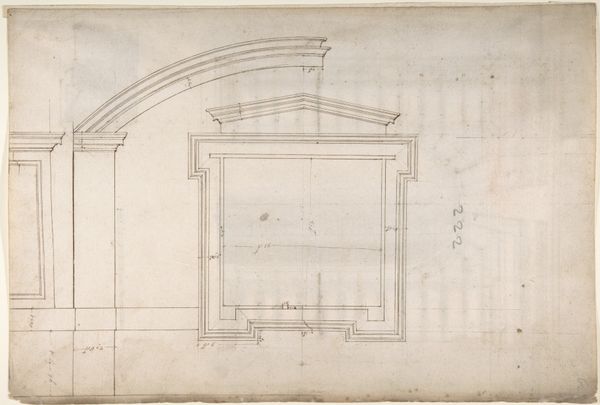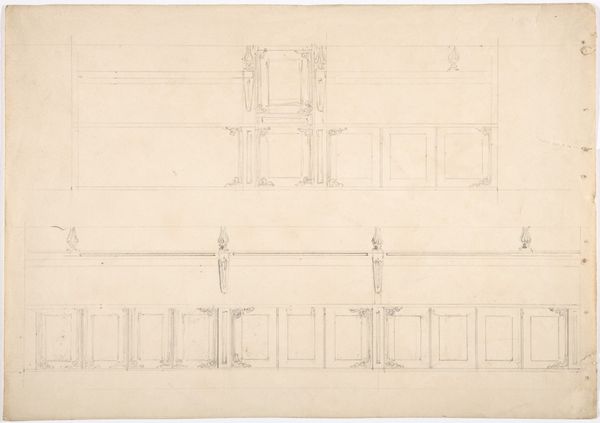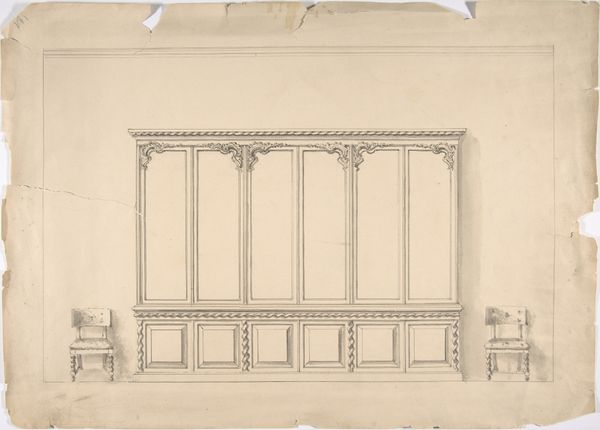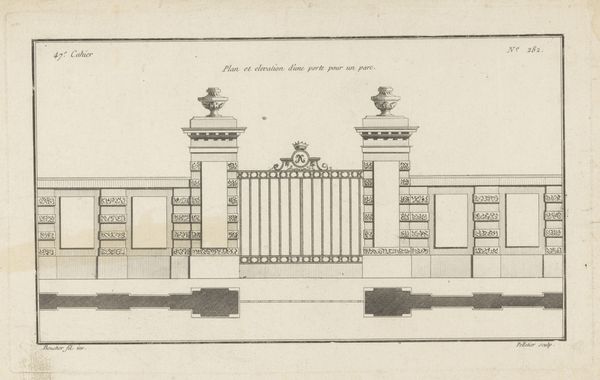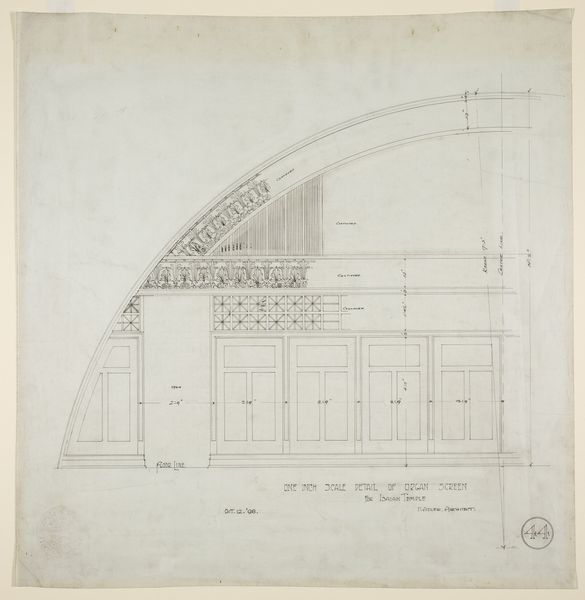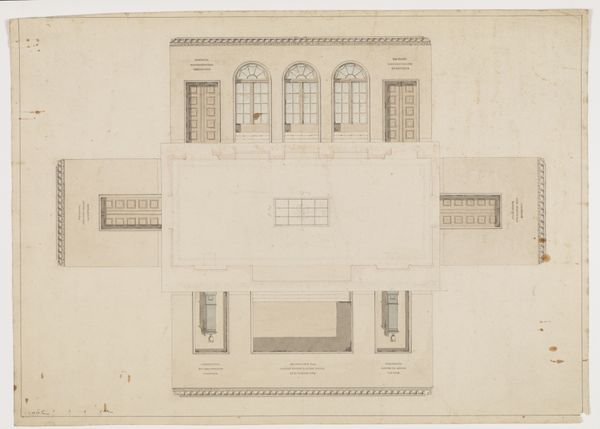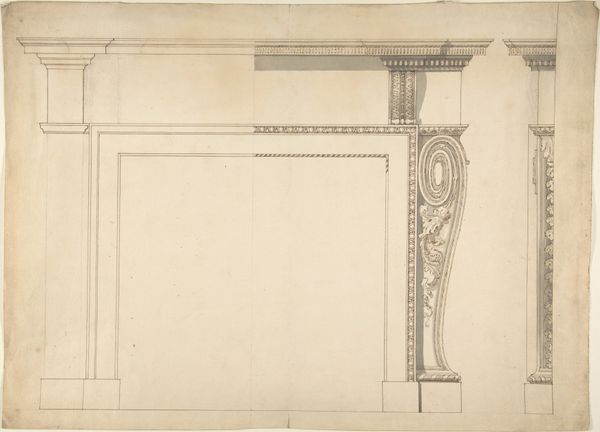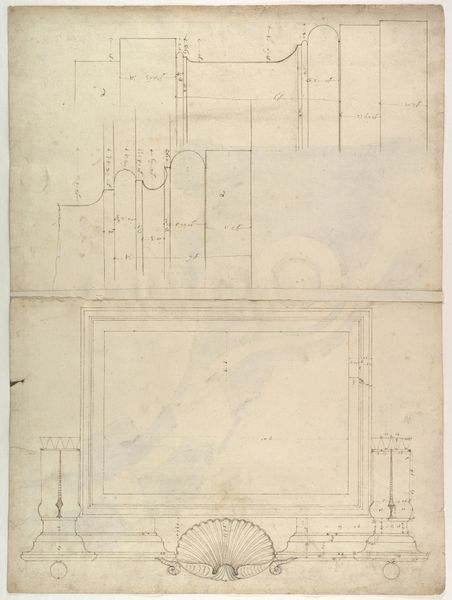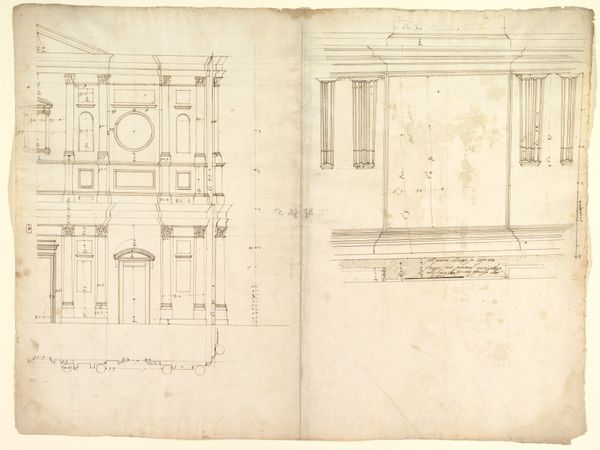
Design for a Greek Revival Entrance Screen, Elevation 1800 - 1850
0:00
0:00
drawing, print, pencil, architecture
#
drawing
#
neoclacissism
# print
#
landscape
#
classical-realism
#
form
#
geometric
#
pencil
#
line
#
architecture
Dimensions: sheet: 13 x 18 in. (33 x 45.7 cm)
Copyright: Public Domain
Editor: Here we have an architectural drawing entitled "Design for a Greek Revival Entrance Screen, Elevation," created sometime between 1800 and 1850. It's rendered in pencil, among other mediums, by an anonymous artist. I'm struck by the austerity and order in the composition; what do you make of it? Curator: Well, my dear, this piece whispers to me of grand aspirations. A time when empires looked to the past for validation, attempting to graft the ideals of ancient Greece onto a very different present. Do you notice how the artist meticulously details every column, every gate? It’s like they are trying to freeze an ideal in time, a vision of permanence. It makes me wonder what was behind it. It appears to me the drawing could have been inspired for the need of social spaces at the time, a transition from public space to the intimacy of private residences... but what do you see? Editor: That's fascinating. The connection to public space hadn't occurred to me. I was mainly thinking about the pure form of it, the geometry. I see the classical-realism aesthetic reflected in the symmetry, too, I am also curious if the screen relates more with exterior or interior purposes Curator: Excellent question! It's an elevation, remember? So, exterior all the way. These neoclassical designs aimed to impress from the outside, presenting a façade of order and sophistication to the world. This design is so stark, and perfect, maybe a touch cold. I would say. Editor: I appreciate your insight! It makes me think about how the style also spoke about values during this period. Curator: Precisely! And sometimes, I wonder, were they values truly held, or just meticulously drafted onto paper, a dream of perfection never truly achieved? A design might hold many social connotations if ever translated to reality!
Comments
No comments
Be the first to comment and join the conversation on the ultimate creative platform.
